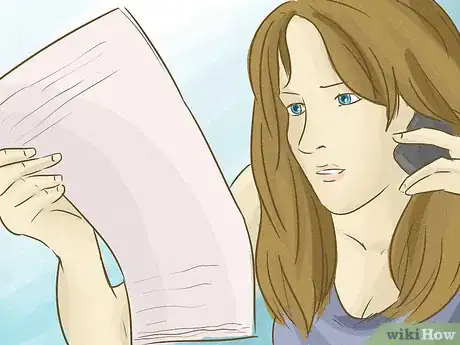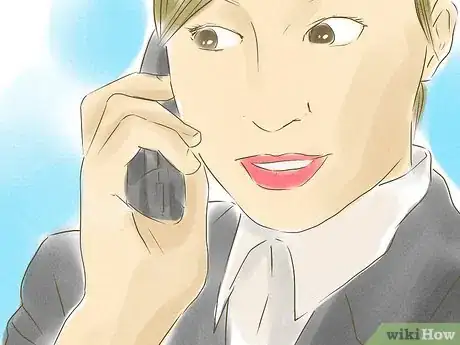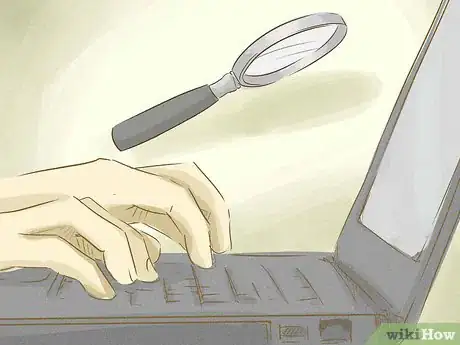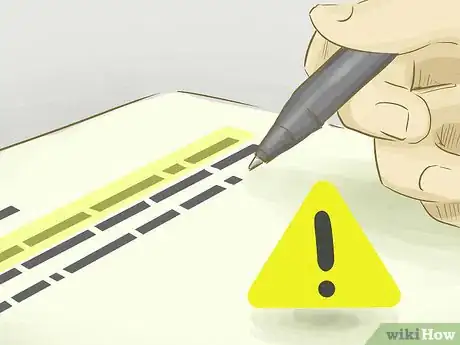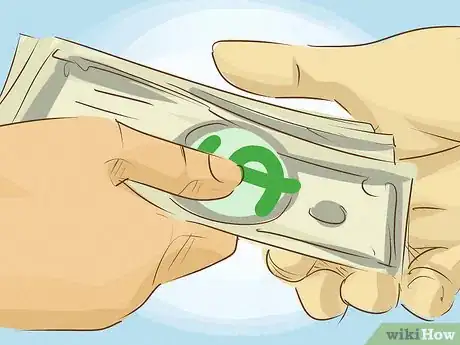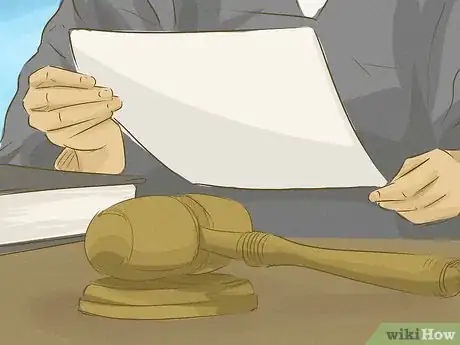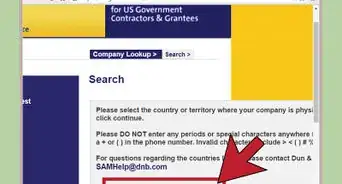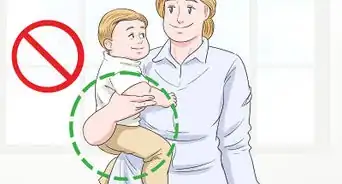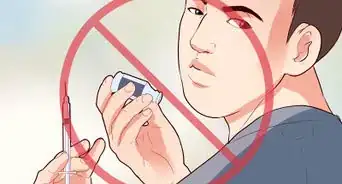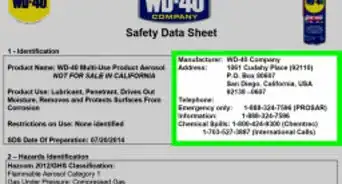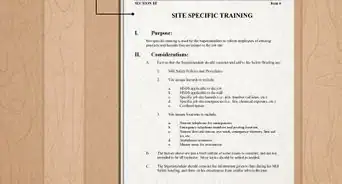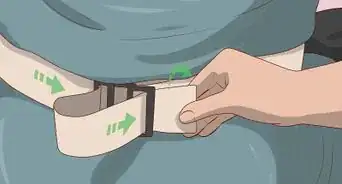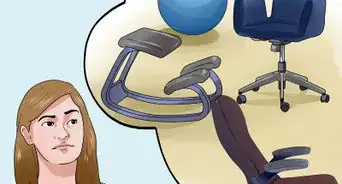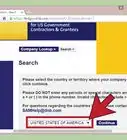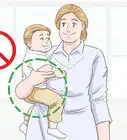This article was co-authored by Clinton M. Sandvick, JD, PhD. Clinton M. Sandvick worked as a civil litigator in California for over 7 years. He received his JD from the University of Wisconsin-Madison in 1998 and his PhD in American History from the University of Oregon in 2013.
This article has been viewed 57,786 times.
Under the Occupational Safety and Health Act (OSHA), your employees have the right to turn you in for any number of work-related safety violations, including use of hazardous materials, fire protection, or noise exposure. Knowing how to respond to an OSHA complaint, and having an existing set of procedures in place, will help your company stay in business and meet all regulatory needs addressed by the complaint.
Steps
Reacting to the Initial Phone Call
-
1Don’t panic. Receiving an OSHA complaint will probably come a shock to you, but don’t panic! All you need to do is remain calm and respectful, listen carefully and follow instructions, make any necessary changes, and send in a reply letter that displays this. In fact, your OSHA complaint should be resolved in a matter of days.[1]
-
2Listen carefully. When you receive the initial phone call notifying you of the OSHA complaint, listen very carefully to the representative on the phone. Avoid asking any questions! Simply be as professional as you can and write down all of the information.[2]Advertisement
-
3Refrain from admitting or explaining anything. While you are on the phone with the representative, refrain from admitting to, denying, or otherwise explaining anything. Now is not the time for that. Simply listen and take in as much information as you can. During this phone call, hold your tongue.[3]
- You might say something like, “I can neither confirm nor deny these allegations,” or simply, “It is not our company policy to respond right away.”
-
4Express genuine concern. After you have heard what the representative has to say, take a moment to express some genuine, professional concern. Illustrate that you take this complaint very seriously.[4]
- You can state your concern very directly by saying "I take this complaint very seriously. The safety of my employees and workplace is very important to me."
-
5Announce your intention to comply. Explain that you intend to review the allegations carefully when you receive the official letter of complaint, and comply with the directions stated within. Make it clear that you will do whatever needs to be done in order to resolve this complaint and rectify the situation.[5]
- You might say, "I have every intention to look into this matter and to correct any problems as soon as possible."
-
6Thank the OSHA representative. At the end of your telephone call, be sure to thank the representative for their time. This helps to close the communication on a positive and professional note.[6]
Responding to the Complaint Letter
-
1Review the OSHA standards cited in the letter. Very soon after your phone call, you should receive a fax correspondence from OSHA. This is your official complaint letter. Review this letter very carefully, and determine the nature of the complaint. [7]
-
2Post a copy of your complaint letter. According to OSHA’s instructions, you must post a copy of your complaint letter on a company bulletin board, where all employees may see it.[8]
- The citation must remain posted for three working days (not including weekends or holidays) or until the problem is corrected.
- This must be done even if you contest the citation.
-
3Sign and fax back your "Certificate of Posting." After you have posted a copy of this letter where your employees can see, sign the included “Certificate of Posting” and fax it back to the number provided. Keep your fax receipt as proof.[9]
-
4Investigate the allegations. Look into every element of the OSHA complaint as thoroughly as you can. Even if you are upset by the complaint, or do not place much stock in its legitimacy, look for any areas that need to be addressed or improved.[10]
-
5Set your correction plan in motion. Once you have investigated all potential problems, devise a plan to correct them, and immediately set your plan into motion. Record any important changes by way of photos, receipts, or other documentation.[11]
Drafting Your Reply Letter
-
1Act quickly. You should draft your reply letter no more than three days after receiving your complaint letter. Once the complaint is received, you have only five days to fully address the situation and submit a reply, so don’t waste any time.[12]
-
2Use a clear format. Look carefully at the way your complaint letter is formatted, note the wording used, and pay attention to the tone. You will want to match both the format and tone of the letter you received.[13]
- Address your letter mirroring the information on the complaint letter you received (including the name of representative who signed your complaint letter).
- Include your official complaint number in the subject line.
- Match your letter’s salutation to the one used in the complaint letter.
- State your intentions with the letter (e.g., to address the allegations and present your findings) in your introduction.
-
3Limit yourself to the facts. In the remainder of your letter, state the facts as simply and clearly as you can. This is not the place to speak ill of an employee, try to deny the allegations, or attempt to place blame on others. Your complaint will be most quickly resolved if you simply address the charges and explain what you have done to rectify the situation.[14]
- For example, you might say, "On November 5, I received OSHA complaint number 2845. Over the course of the next two days, we investigated citations 1-3 and established corrective actions. On November 7, we rectified citation 1 (improper use of fume hood) by replacing the equipment (see enclosed receipt and photo)."
-
4Provide documentation. Send your letter along with any supplemental paperwork that will help you close your case. This may include purchase orders, receipts, monitoring results, vendor/contractor contact information, photographs, or any other document that verifies the changes you’ve made. [15]
-
5Send the letter. Arrange to have the letter sent by Certified Mail (with a receipt signature request), or by private courier. Don't forget about your five-day deadline![16]
-
6Call and follow up. If you have not heard anything on your complaint by the end of three business days after your anticipated date of receipt, call and follow up. Have your case number ready, and ask for a status report.[17]
-
7Prepare for an inspection. It is possible that an OSHA inspector may show up without warning to your facility. Be kind, professional and courteous, and only answer specific questions addressed by the inspector.[18]
-
8Pay any penalties. Depending on the nature and severity of the complaint, you may also be asked to pay a penalty. This penalty must be paid within 15 working days from the receipt of citation by sending a check directly to OSHA. Until your payment is received, you case will not be resolved.[19]
Contesting an OSHA Complaint
-
1Request an informal conference. If you are considering contesting your complaint, it is strongly encouraged for you to call and request an informal conference with a local OSHA representative. During this conference, you will be able to get a better sense of the nature of your violation, discuss methods for correction, discuss settlement options, and possibly even resolve disputed citations and penalties.[20]
- This can be also be done if your intention is to comply fully, or if you are not sure what course to take.
-
2Draft and submit a “Notice of Intent to Contest.” If you have concluded that any element of the complaint is unfounded, or if you disagree with either the fee assigned or the abatement date, you must submit an official Notice of Intent to Contest within 15 working days of receipt of your citation. Your letter must state exactly what is being contested—the citation, part of the citation, the fee amount, or the abatement date—as clearly as you can. Then send this notice by way of certified mail.[21]
- For example, you might say, “I wish to contest the citation and penalty proposed for items 2 and 3 of the citation issued November 5, 2015.”
-
3Wait for the OSHRC to schedule a hearing. As soon as your Notice of Intent to Contest is received, your case will officially be in litigation. Your abatement and fee dates will be suspended until a decision is reached, and your case is forwarded to OSHRC. OSHRC is an independent agency separate from the Department of Labor. The OSHRC will schedule a hearing for your case.[22]
-
4Attend the hearing. Once your hearing date is set, you will want to begin preparing for your hearing, and make sure you can attend. You may want to obtain legal council, who will help you to present your case. Both employers and employees are eligible to participate in this hearing.[23]
-
5Choose to accept or appeal the decision. At this hearing a decision will be reached, either upholding the initial citation and fees, modifying them to account for your specific contestation, or dismissing them. Either party then has the opportunity to accept the decision or to submit an appeal for further investigation by the OSHRC. If the case is still not resolved, it would then move on to the Federal Circuit Court.[24]
References
- ↑ http://www.ishn.com/articles/84018-how-to-handle-osha-complaints
- ↑ https://www.rocketlawyer.com/article/responding-to-osha-complaints.rl
- ↑ http://www.ishn.com/articles/84018-how-to-handle-osha-complaints
- ↑ https://www.rocketlawyer.com/article/responding-to-osha-complaints.rl
- ↑ http://www.ishn.com/articles/84018-how-to-handle-osha-complaints
- ↑ http://www.ishn.com/articles/84018-how-to-handle-osha-complaints
- ↑ http://www.ishn.com/articles/84018-how-to-handle-osha-complaints
- ↑ https://www.osha.gov/as/opa/worker/handling.html
- ↑ https://www.osha.gov/as/opa/worker/handling.html
- ↑ http://ehstoday.com/safety/ehs_imp_78870
- ↑ http://www.ishn.com/articles/84018-how-to-handle-osha-complaints
- ↑ http://ehstoday.com/safety/ehs_imp_78870
- ↑ http://www.ishn.com/articles/84018-how-to-handle-osha-complaints
- ↑ http://www.ishn.com/articles/84018-how-to-handle-osha-complaints
- ↑ http://ehstoday.com/safety/ehs_imp_78870
- ↑ https://www.osha.gov/as/opa/worker/handling.html
- ↑ https://www.osha.gov/as/opa/worker/handling.html
- ↑ https://www.rocketlawyer.com/article/responding-to-osha-complaints.rl
- ↑ https://www.osha.gov/Publications/osha3000.pdf
- ↑ https://www.osha.gov/Publications/osha3000.pdf
- ↑ https://www.osha.gov/Publications/osha3000.pdf
- ↑ https://www.osha.gov/Publications/osha3000.pdf
- ↑ https://www.osha.gov/Publications/osha3000.pdf
- ↑ https://www.osha.gov/Publications/osha3000.pdf




